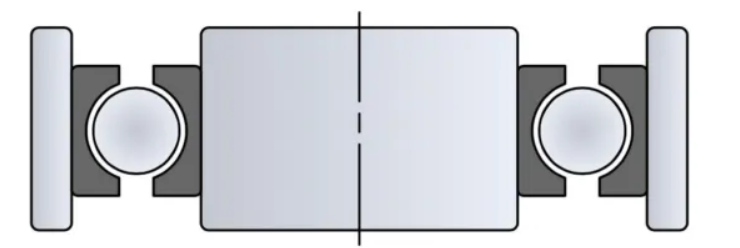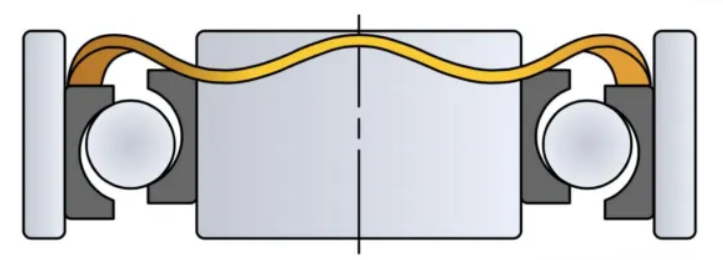
Bearing preloading refers to the process of applying a certain axial or radial force during the installation or operation of the bearing to eliminate the original clearance inside the bearing and maintain an appropriate contact pressure between the rolling elements and the raceways. This process plays a significant role in the performance, lifespan and system stability of the bearings.

Not pretightened

There is preload
In rolling mill bearings, there exists a type of bearing with a spring preload structure. It is a design that applies axial preload force to the bearing through a spring device. Its characteristics are mainly reflected in the dynamic adjustment of the preload force, adaptation to complex working conditions, and improvement of bearing performance, etc. The following are its advantages and disadvantages:
1. Core Advantages
Dynamic preload adjustment
The spring can automatically adjust the preload force according to the wear, thermal expansion or vibration of the bearing, avoiding the reduction of running accuracy or the intensification of vibration caused by the increase of clearance. It is especially suitable for working conditions with large temperature variations (such as high-speed motors or precision machine tools), compensating for dimensional changes caused by thermal expansion and contraction.
Reduce vibration and noise
The elastic buffering of springs can absorb high-frequency vibrations, reduce the energy transferred to the supporting structure, and enhance the stability of equipment operation (such as high-speed spindles or precision instruments). By suppressing the minute displacements inside the bearing, the noise caused by the clearance is reduced.
Extend the service life of bearings
Constant preload force avoids the impact wear between the rolling elements and the raceway, reducing fatigue damage. Under frequent start-stop or variable load conditions (such as industrial robot joints), spring preloading can prevent fretting wear caused by instantaneous impacts.
Adapt to high-speed operation
The flexible preloading of the spring can avoid excessive rigid constraints, reduce frictional heat generation at high speeds, and lower the risk of gluing (such as in turbocharger bearings).
Simplify installation and maintenance
The spring automatically compensates for installation errors, reducing the strict requirements for assembly accuracy, and is suitable for mass production or scenarios with limited on-site maintenance conditions.
2. Potential Limitations
Axial space occupation
The addition of spring assemblies may increase the axial dimensions of the bearing system, which is not friendly to compact designs such as micro motors.
Dynamic stability challenge
Under ultra-high speed or extreme impact loads, the resonance of the spring may cause system instability, which needs to be suppressed through damping design or material optimization.
Maintenance complexity
Spring fatigue or failure requires regular inspection, and the maintenance cost is higher than that of the rigid preload scheme (such as gasket adjustment).
Cost factor
The design of the spring assembly and the matching structure will increase the manufacturing cost and may not be economical for low-cost equipment.
The spring preload bearing design, through an elastic preload mechanism, demonstrates significant advantages under dynamic working conditions, especially suitable for high-precision, variable load or heat-sensitive scenarios. However, its design needs to balance space, cost and dynamic stability. It is recommended to give priority to it in high-speed, high-precision or complex working conditions, and evaluate the cost performance in simple and low-cost applications.